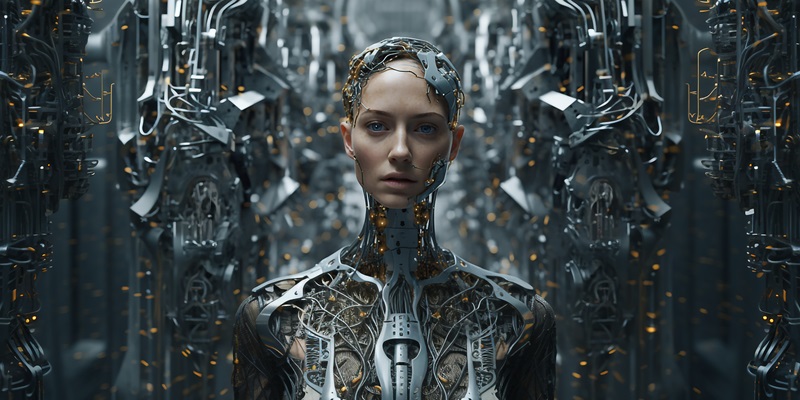Artificial intelligence (AI) has made remarkable strides in the realm of generating hyperrealistic faces that can deceive even the most discerning eye. However, this technological breakthrough, termed “hyperrealism,” raises concerns about the rise of deepfakes and the potential implications for society. In this article, we delve into the duality of AI-generated faces, exploring the bias within this process and the reinforcement of racial prejudices, while also examining the impact on societal ideals and the challenges of regulation. It is imperative that we take action now to ensure AI benefits, rather than harms, future generations.
Hyperrealism with AI-generated Faces
When it comes to generating AI-generated faces, scientists have discovered a fascinating phenomenon known as hyperrealism. Lead researcher Amy Dawel has dedicated her work to understanding this phenomenon, which involves the creation of faces that appear more “real” to human eyes than actual photographs. Hyperrealism has particularly troubling implications considering its association with deepfakes and the potential manipulation of truth.
Bias in AI: The Hyperrealism of Uncanny Valley in Faces of Color
While AI has achieved hyperrealism with white faces, there remains a stark contrast when it comes to faces of color. In an unsettling finding, Dawel’s research highlights that AI algorithms have difficulty achieving hyperrealism with diverse ethnicities, leaving faces of color languishing in the uncanny valley. This disparity in training data raises concerns about the perpetuation of racial prejudices in media consumption, further exacerbating societal divisions instead of fostering inclusivity.
The Reinforcement of Racial Prejudices
The biased training data used to achieve hyperrealism in AI-generated faces accentuates the potential reinforcement of racial prejudices. When these hyperrealistic faces, predominantly those of white individuals, flood our screens and social media platforms, they inadvertently shape the visual representation of society. This perpetuation raises questions about the impact on our subconscious biases and the normalization of discriminatory beauty standards. Media consumption influenced by biased AI has the potential to further alienate marginalized communities, and we must confront this issue head-on.
AI-Generated Faces and Societal Ideals
Frank Buytendijk, Chief of Research at Gartner Futures Lab, sheds light on the impact of AI-generated faces on teenagers. Algorithms that generate hyperrealistic faces often establish a particular ideal, creating immense pressure on adolescents to conform. The need to measure up to these hyperrealistic standards can lead to body image issues, low self-esteem, and a distorted sense of reality. The implications for mental health and well-being among vulnerable youth are concerning, and we must consider the ethical dimensions of these advancements in AI technology.
Confidence in Misidentification: A Cognitive Quagmire
Interestingly, Dawel’s research also reveals a perplexing connection between confidence and misidentification. The study found that individuals who were most confident in their choices tended to make the most mistakes in identifying AI-generated faces as real. This cognitive quagmire indicates that hyperrealistic AI-generated faces have the potential to deceive even the most confident individuals, highlighting the need for greater awareness and scrutiny when consuming media.
The Urgent Need for Transparency and Independent Monitoring
Given the profound impact of AI-generated faces on society, Dawel emphasizes the necessity for transparent development and independent monitoring of generative AI. A robust system of checks and balances, overseen by independent bodies, is crucial to ensure the responsible deployment of AI technology. Transparent development practices and an external oversight mechanism are essential to prevent abuses and unintended consequences. We must not allow technological advancements to outpace ethical considerations.
Mitigating Biased AI Risks: An Uphill Battle
Mitigating the risks associated with biased AI represents a significant challenge. However, it is a process that new technologies often undergo. Addressing bias in AI algorithms requires targeted efforts to diversify training data and recalibrate algorithms to produce fair and representative outcomes. Striving for diversity and inclusivity in AI development is essential to counteract biases ingrained in our data and ensure equitable outcomes in AI-generated media.
The Pace of Regulation vs. Rapid AI Development
Dawel acknowledges that the pace of regulation cannot keep up with the rapid development of AI. As this technology evolves and becomes more ubiquitous, it is imperative that policymakers, industry leaders, and society at large grapple with AI’s ethical implications. Early action is necessary to introduce guidelines, frameworks, and ethical standards that promote responsible AI development and deployment. We cannot afford to wait until AI-generated faces further entrench harmful stereotypes and biases in our society.
AI’s ability to generate hyperrealistic faces presents a double-edged sword. While the technology offers immense potential, we must confront the inherent biases and risks associated with AI-generated faces head-on. The dissemination of biased AI-generated faces reinforces racial prejudices, distorts societal ideals, and poses mental health concerns for vulnerable individuals. Transparent development, independent monitoring, and proactive regulation are the necessary ingredients to ensure AI benefits future generations by promoting diversity, inclusivity, and responsible usage. It’s time for collective action to shape the trajectory of AI’s impact on our shared future.

